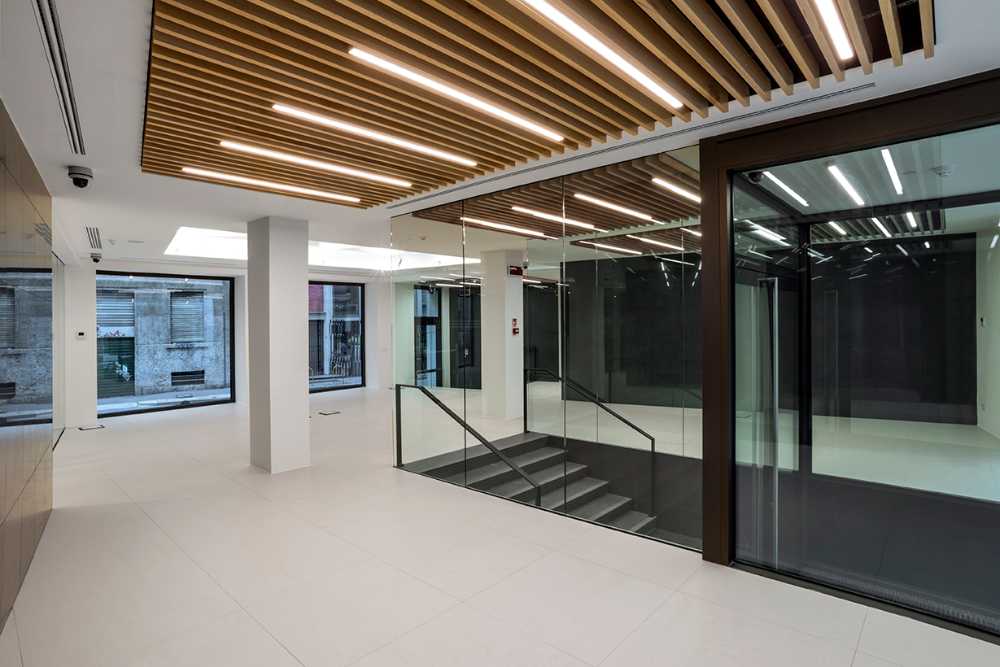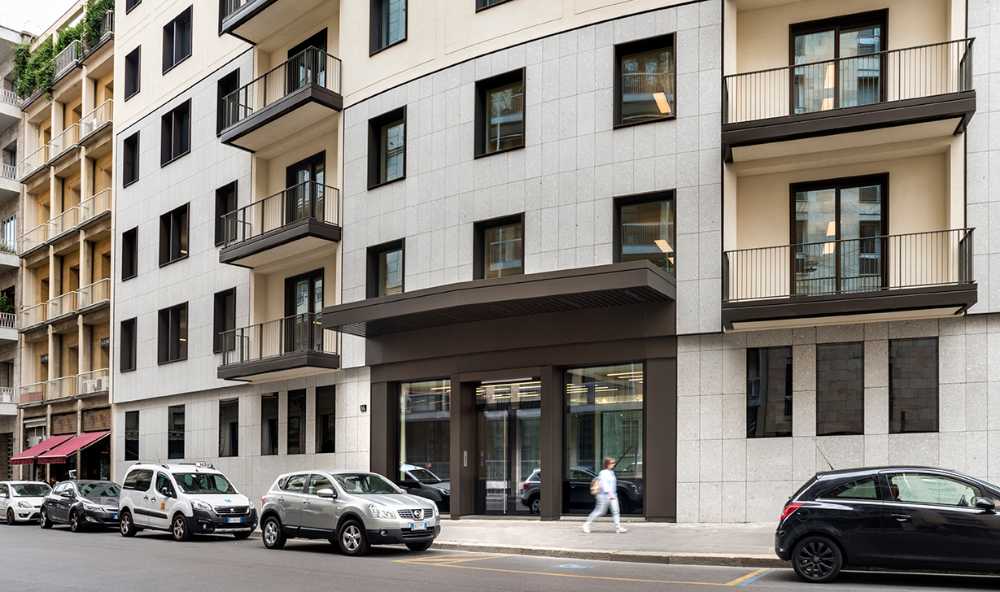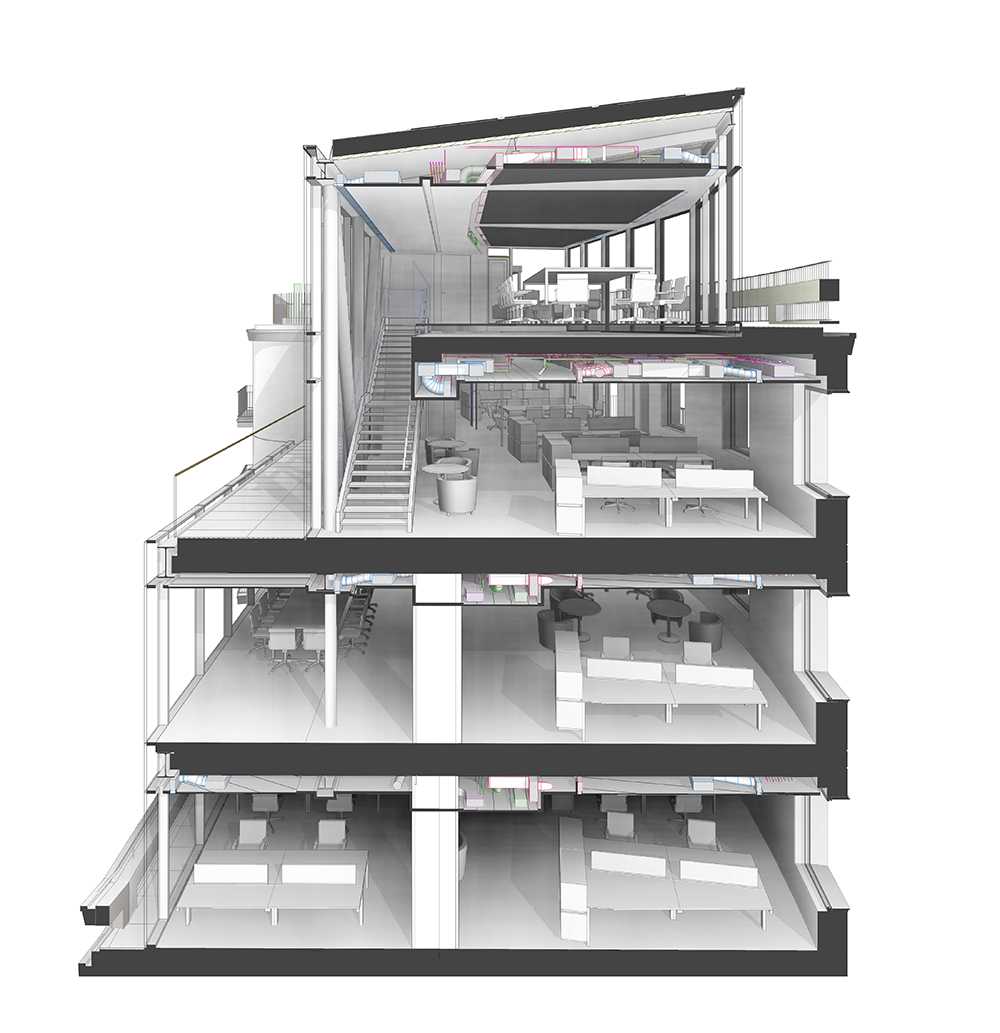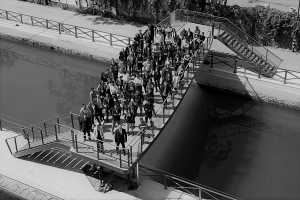The L22 studio has created in Via Fatebenefratelli in Milan, within the perimeter of the Brera district with its peculiar historical and landscape value, the redevelopment of a 40s residential building, transforming it into a contemporary structure that stands out for its high energy performance and comfortable working environments


Requalification of a historic building in the centre of Milan. Energy performance and comfort for offices
In via Fatebenefratelli 14 in Milan, L22 studio transforms a building from the classic 40s residential architecture into a contemporary office structure, optimizing its energy performance and interior comfort
- #Europe
- #Italy
- #Offices
- #Restoration
- #Wood
- #Metal
- #Glass
- #Architectures
- #Renovation

The property is spread over a height of six floors above the ground with the characteristic raised ground floor on the road and a volume in the roof with a covered loggia. The project was entirely developed with BIM methodologies and on one hand focuses on the careful reconstruction of the original architectural elements while on the other inserting the innovative details necessary for technical-functional upgrading and the new role in the urban context

For the facade of Via Fatebenfratelli, the project is centred on three points: the reinterpretation of the decoration, colors and materials, the renovation of the entrance and base, the insertion of windows and balconies. The extension of the existing entrance is further enhanced by the addition of a cantilevered glazed roof. A new entrance is added along via Annunciata. In order to have two important windows, the windows on the mezzanine floor have been enlarged. The connection between the two sides of the same building testifies to its new structure in relation to the context

The volumetric operation enhances the building with an attic and a terrace that until now had been inaccessible. The impact of the new volume does not alter the balance and provides a panoramic view of the historic city and the new one. A general lightening of the structure is instead made possible by demolishing all the partitions on the floors and lightening the roof with steel, wood and glass elements; changes that amplify the scenic presence of the building without modifying its volumes

To reposition the building on the market with adequate energy performance, it was decided to adopt the LEED Building Design and Construction protocol - Core & Shell and 2009. The installation and architectural choices were made following the performance verification through the creation of an energy model that simulates the features of the building based on changes in external climatic conditions and operating profiles. Among the redevelopment measures that were adopted were the replacement of windows and shutters, insulation of the roof, curtain walls with uprights and structural crossbeams, double glazing and new systems for the production of heat and cooling installed on the roof

The LED lamps with controlled luminance used in the offices are equipped with a dimmable electronic ballast with digital DALI protocol, which switches on and off and adjusts the light intensity. The air conditioning and direct expansion system with external heat recovery units with a variable refrigerant volume is capable of providing heat and cold independently for each terminal

The high complexity of the project, which involved the demolition and reconstruction of parts of the existing building as well as the alteration of volumes and structural/installation adjustments, benefits greatly from a design "workflow" based on real-time coordination between the various disciplines, through the adjustment to the current regulations, enhancing the property due to its peculiar urban location and volumetric potential


















